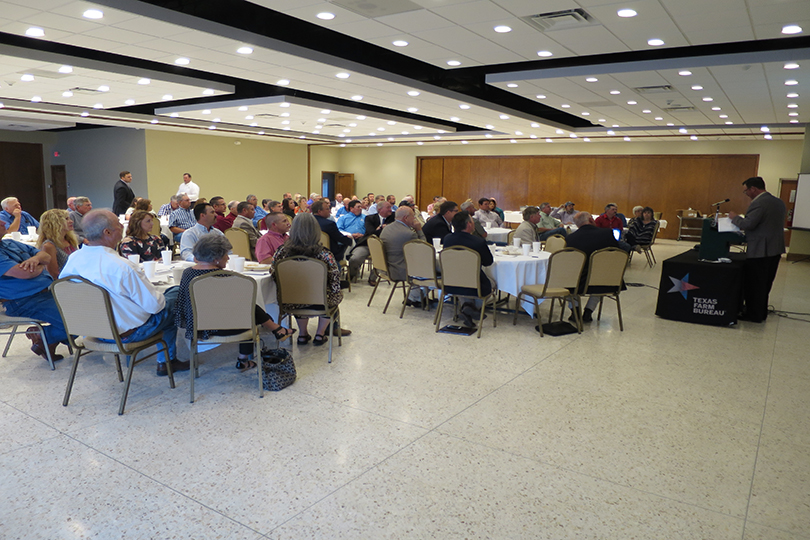By Julie Tomascik
Editor
Strengthening private property rights was a common issue discussed at recent Texas Farm Bureau Policy Development meetings held across the state. Members also discussed other potential organizational policy ideas for the upcoming year.
“Policy Development meetings are instrumental in mapping out our organization for the next year,” Glen Jones, director of Research and Policy Development, said. “Each district has different issues that are important to their area, but they’re also important to agriculture and rural life in our state.”
About 800 county leaders were in attendance, representing nearly 160 county Farm Bureaus, at the district Policy Development meetings.
The need for eminent domain reform was discussed at several of the meetings.
“Eminent domain was a priority issue for Texas Farm Bureau in the most recent legislative session,” Jones said. “It was disappointing to not achieve eminent domain reform this session, but our membership doesn’t seem to be giving up.”
A recurring theme at the meetings, Jones noted, was getting membership more involved in eminent domain legislation.
“If we’re going to see major changes and strengthen private property rights, it’s going to take increased membership involvement, according to the county leaders in attendance at the meetings,” he said. “That could include meetings with legislators, as well as follow up phone calls and emails during the next legislative session.”
Other top issues discussed included: animal identification and traceability, easements, agricultural use valuation and feral hog control methods.
Jones noted animal identification and traceability was discussed as an option to enhance agricultural products’ desirability overseas.
The current interstate traceability program does not apply to cattle less than 18 months of age, which leaves a substantial portion of the U.S. cattle herd potentially unidentified and difficult to trace back to a farm of origin.
Potential policy in regard to easements was discussed.
“It was brought up to have landowners receive an annual payment based on revenue generated from the easement instead of a one-time payment,” Jones said.
There was concern about additional pressure being placed on ag use valuation, especially as it relates to wildlife management use.
Jones noted wildlife management use properties must first qualify for ag use valuations for five out of seven years. Landowners can then qualify for wildlife management appraisal if certain requirements are met.
Feral hogs are a growing nuisance for farmers and ranchers in the Lone Star State, and landowners are looking for methods and funding to control the growing population.
This topic has been discussed in previous years, but it took on a greater role after control methods gained much attention during the legislative session.
The need for a statewide recycling program for agriculture also surfaced.
Members discussed the need for a way to recycle chemical containers, tires, feed sacks and other products used on and off the farm.
The 2018 Farm Bill is on the horizon, and Texas farmers and ranchers discussed what is needed to have a strong safety net.
“Including cotton as a Title I commodity surfaced at the meetings,” Jones said. “Getting help for cotton farmers was a major discussion, but members realized the importance of insuring all commodities have adequate support.”
Members at the meetings also discussed potential policy to create a self-help program to promote the Texas horse industry and establish policies that promote and protect aquaculture.
County Farm Bureaus must submit resolutions to the state office by Friday, Oct. 27.
Policy proposals approved by county Farm Bureaus will be considered by the TFB Resolutions Committee in early November.
The committee’s recommendations will be forwarded to the TFB Annual Meeting Dec. 2-4 in Frisco for consideration by the voting delegates.

